site search
online catalog
IDENTIFIED 12th NEW JERSEY SOLDIER’S RELIGIOUS TRACT
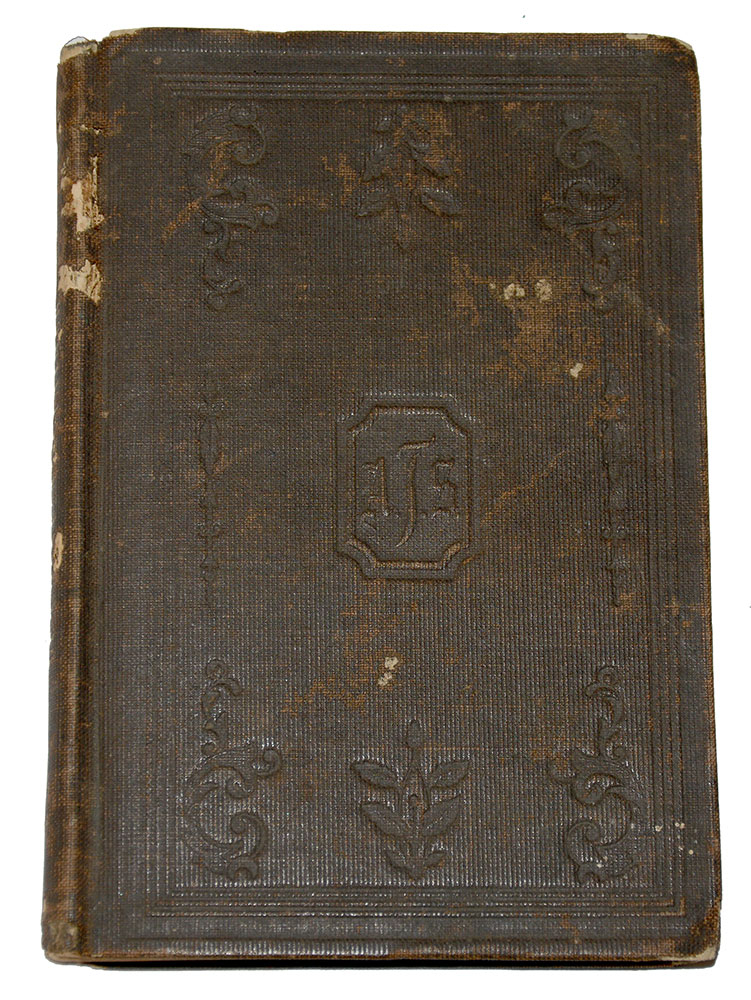
Hover to zoom

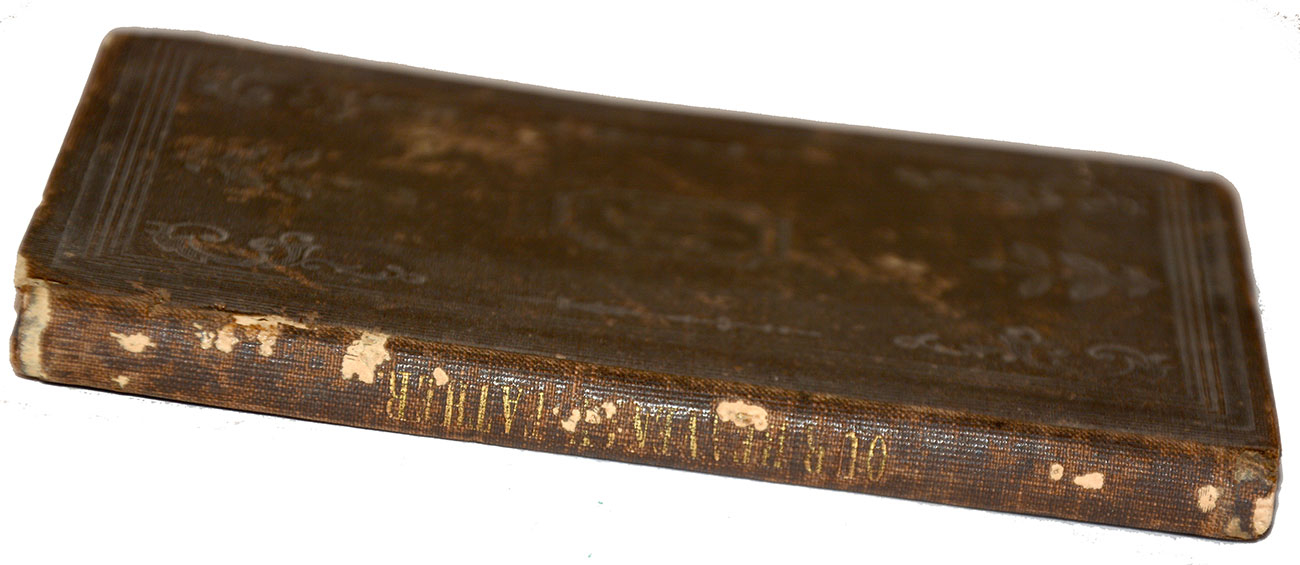
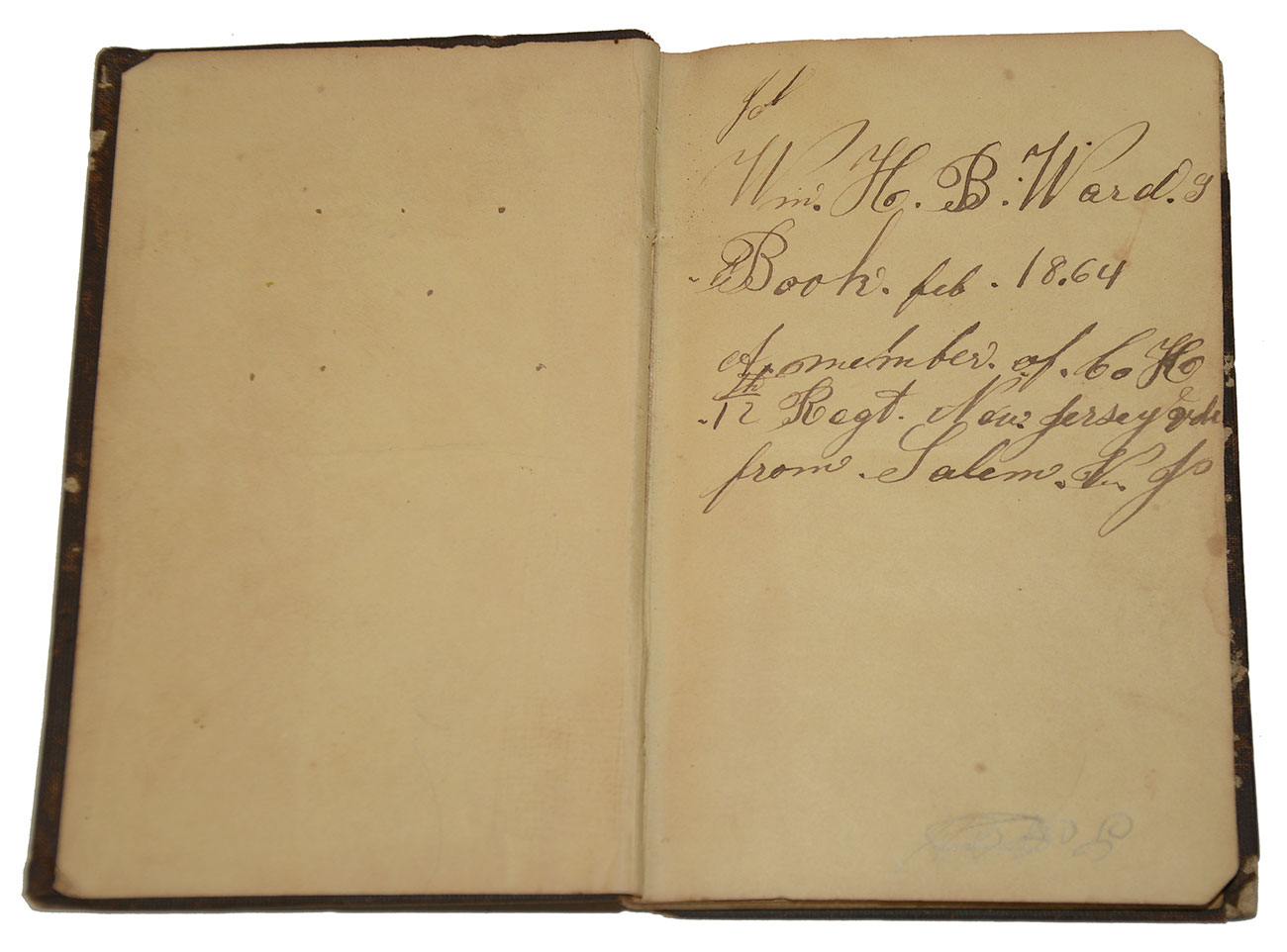
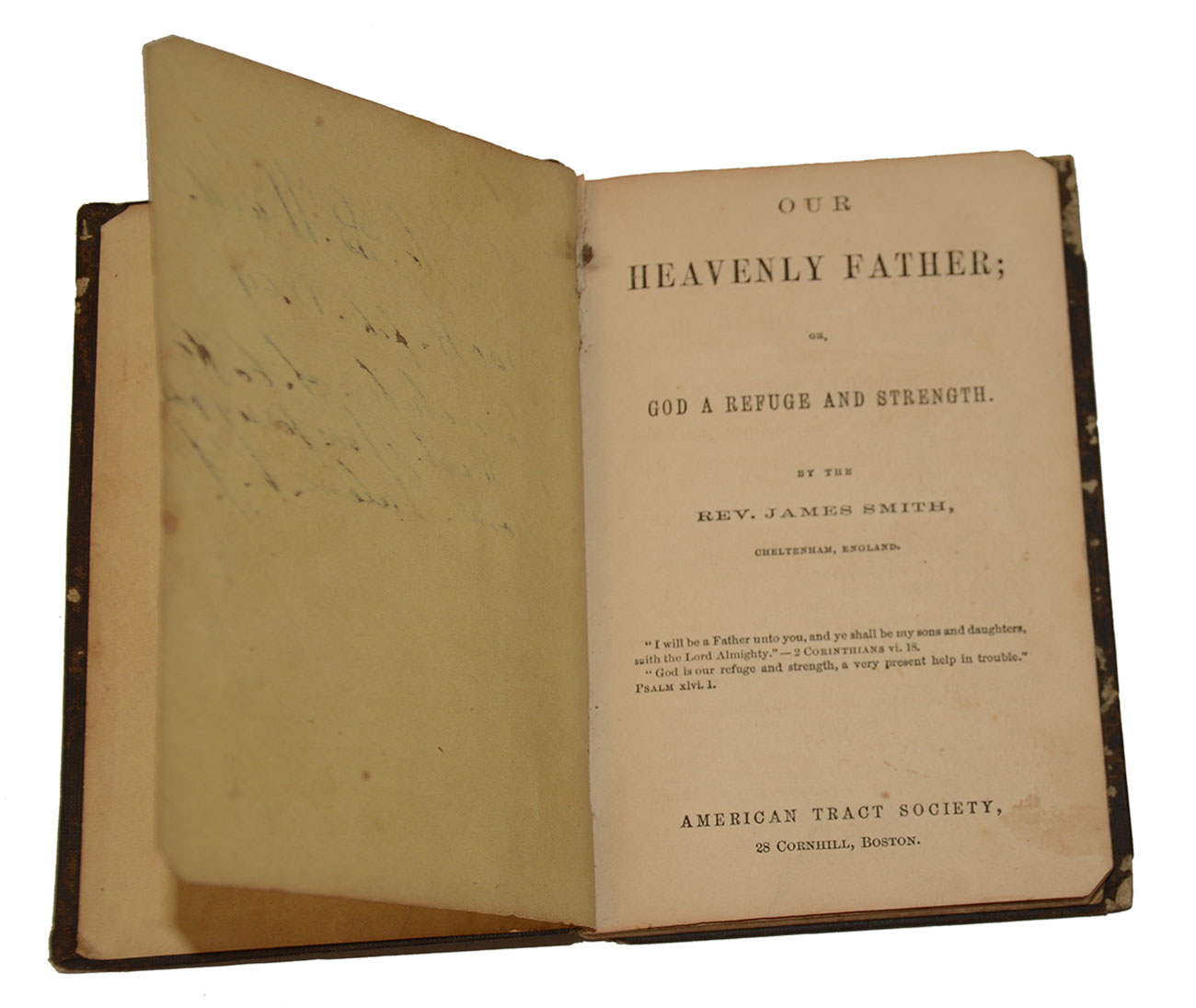
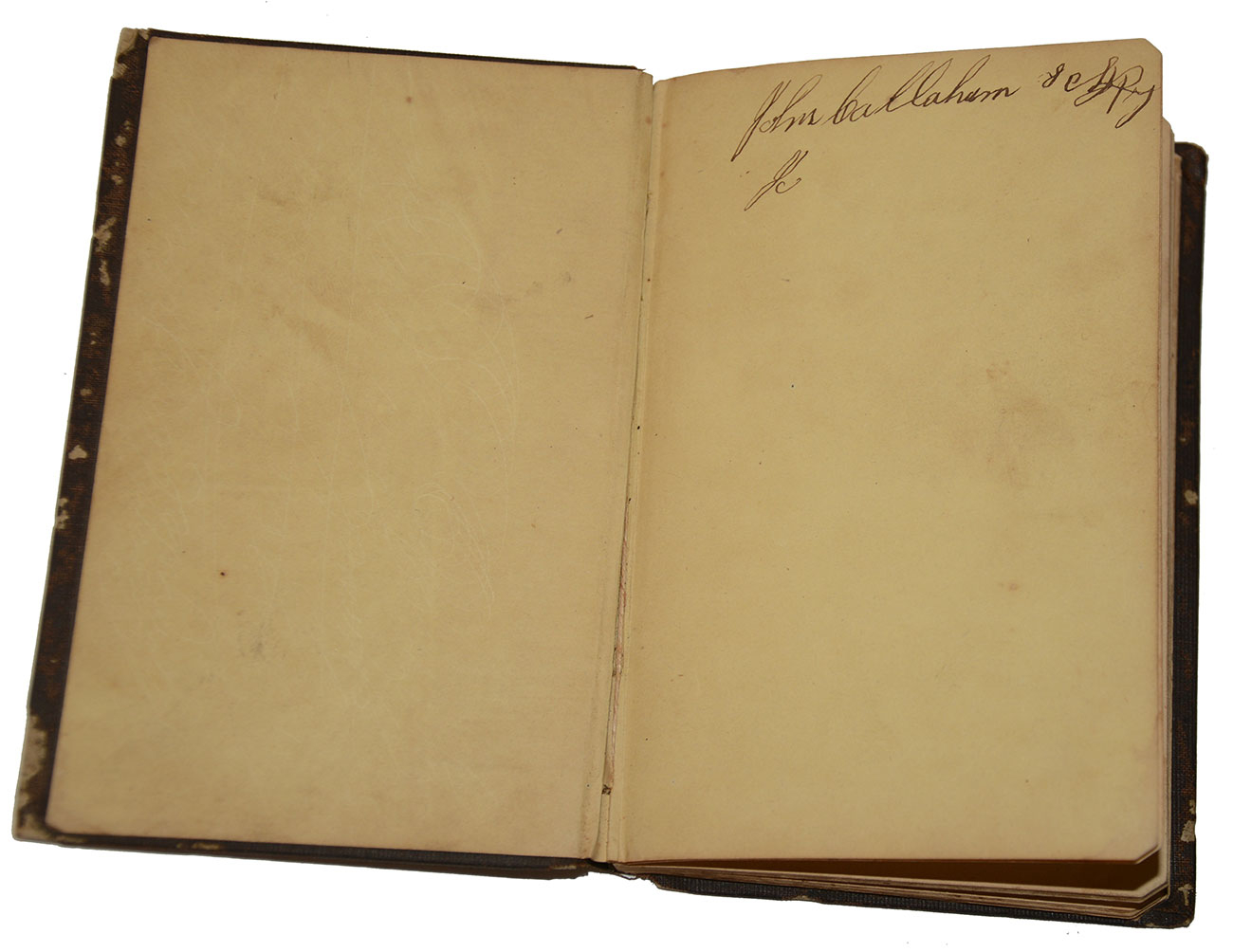
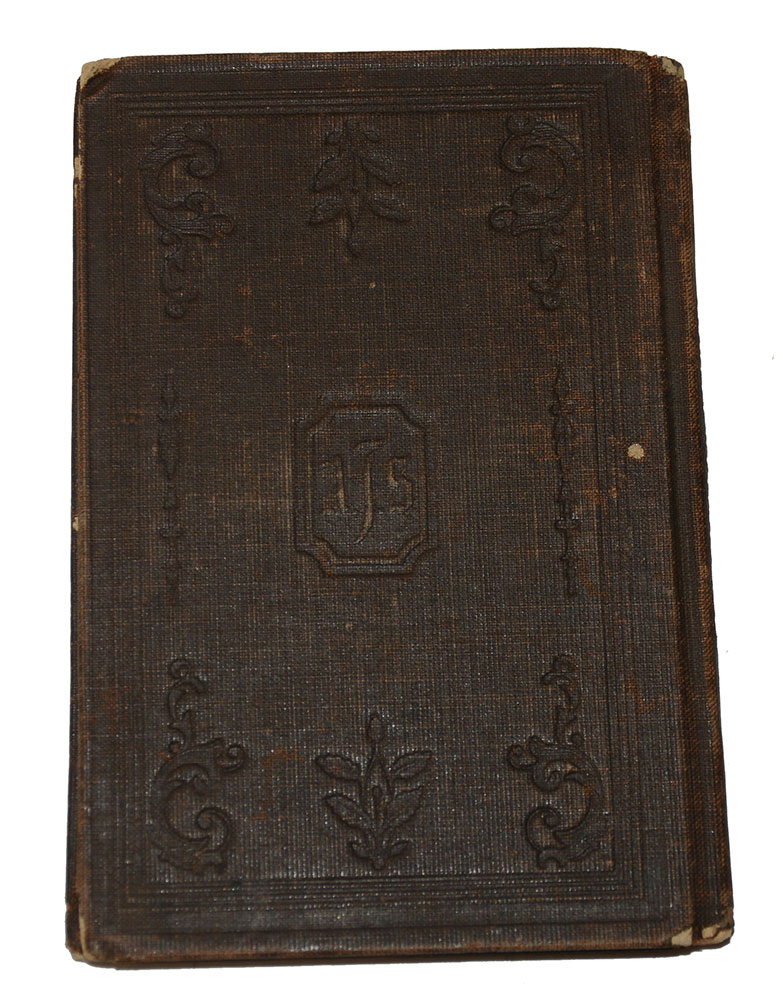
$495.00 SOLD
Quantity Available: None
Item Code: 37-446
A pocket-size religious tract titled, “Our Heavenly Father or God a Refuge and Strength” by Rev. James Smith, printed by the American Tract Society of Boston. Very typical of the many religious tracts handed out to departing soldiers to tend to their spiritual well-being by local churches, religious groups, soldiers’ aid societies and friends. This one is nicely inscribed in brown ink on the flyleaf: “Wm. H.B. Ward’s / Book. feb. 1864/ A member of Co. K / 12th Regt New Jersey vols. / from Salem. N.J.”
Ward enlisted Aug. 11, 1862, and mustered into Co. K of the 12th New Jersey as a private on Sept. 4. He served though the war, mustering out June 4, 1865, at Munson’s Hill, Va. The regiment was officially organized in September 1862, served until December in the defenses of Baltimore, then joined the 2nd Army Corps, with which is served the rest of the war, seeing heavy action at Chancellorsville and Gettysburg, where it fought on July 2 and July 3, served in the Fall 1863 campaigns, and then saw heavy fighting again in the Overland Campaign at Spottsylvania and other fields in Grant’s advance on Richmond and Petersburg.
We have identified him fully as William Henry Brooks Ward (1841-1895.) After the war he worked for the Pennsylvania Railroad, and died in Downingtown, PA. The Union Army summarizes the regiment’s service as follows:
On Sept. 7 the regiment left the state for Washington, but at Baltimore was diverted from its course by Gen. Wool, commanding that district, who ordered it to proceed to Ellicott City, the county seat of Howard county, Md., 15 miles from Baltimore on the line of the Baltimore & Ohio railroad. At Chancellorsville, on May 3, 1863, the regiment received its first taste of actual warfare. It behaved with great gallantry, though the loss was severe, amounting to 179 in killed, wounded and missing. Although under arms during the two succeeding days and nights, it was not again engaged, and on the night of the 5th it recrossed the Rappahannock and proceeded to its old camp, having in its first battle lost over one-tenth of its men. Soon after reaching the field at Gettysburg on July 2, Co. I was sent out on the skirmish line, but the combat not yet being opened, only two or three casualties were sustained. In the afternoon a house and barn standing about 200 yards west of the Emmitsburg road and nearly equidistant from either army having been occupied as a cover by the Confederate sharpshooters, Cos. B, H, E and G were sent out to dislodge them, which they did, capturing 6 commissioned officers and 80 men, but with considerable loss, Capt. Horsfall of Co. E, a brave officer, being killed, and Lieut. Eastwick wounded. During the fearful infantry contest of the following day the regiment was actively engaged, but only lost 5 or 6 men killed and 1 officer and 30 men wounded. On Oct. 14, when near Auburn mills, some 2 miles east of Warrenton, the Confederate cavalry made an attack upon the corps of which the regiment was a part, evidently hoping to capture its train, but they were repulsed with loss and the corps continued its retreat toward Centerville, the point which Lee was straining every nerve to reach in advance of the Union troops. In the engagement at Bristoe Station, which lasted for 3 or 4 hours, several men of the 12th were wounded, Lieut. Lowe, of Co. G, being among the number. In the skirmishes at Mine Run the regiment did not sustain any casualties, although under fire on several occasions. In the affair at Morton's ford, some 10 men of the regiment were wounded, but only 1 fatally. At the battle of the Wilderness, although not engaged as a whole, the regiment suffered considerably, Lieut. John M. Fogg, of Co. H, being killed, while Lieut. Frank M. Riley, of Co. K, and several others were wounded. Two days later the regiment lost heavily, Lieut.-Col. Davis and Capts. Chew and Potter being among the wounded. In the magnificent assault at Spottsylvania, which resulted in the capture of over 3,000 prisoners and some 30 guns, the 12th again suffered severely, Lieut.-Col. Davis being instantly killed while bravely leading the regiment; Capt. H. M. Brooks and Lieut. E. P. Phipps were severely wounded and were obliged to quit the service in consequence. In the assault at Cold Harbor the loss of the regiment was severe, Capt. McCoomb, commanding the regiment, being mortally wounded by the explosion of a shell, which also killed or wounded several privates. Up to June 16 the total loss of the regiment in this memorable campaign had been some 250 killed, wounded or missing--a large proportion of the wounded being officers. From this time forward the regiment was in position at various points on the line, and in July it participated in the movement and affair at Strawberry Plains and Deep Bottom, on the north side of the James. Thence, by a forced march, it returned to the Petersburg front, arriving in time to support the assault at the explosion of the mine, July 30, though not actually engaged. It participated in the second movement to Deep Bottom, charging the enemy's picket line under Capts. Chew and Acton, and upon returning marched to the extreme left flank of the Army of the Potomac, whence it was marched to Reams' station, on the Weldon railroad, where the 1st division of the corps had preceded it. In the severe action at the latter place Lieut.-Col. Thompson, commanding the regiment, was severely wounded and Lieuts. Rich and Stratton were killed. After the action at Reams' station the regiment was in various positions along the Petersburg front, Fort Hell on the Jerusalem plank road, Fort Morton, and at other points, until late in October, when it moved out and participated in the action known as the battle of the Boydton road, where it lost 4 killed and 9 wounded--including Capt. T. O. Slater. In the winter of 1864-65 it took part in the various actions at Hatcher's run, where in one instance it charged across the run, waist deep, and took the enemy's works, upon which its color- bearer, Ellwood Griscom, was the first to plant the national colors. It was present in the movements of the army preceding the main assault on the Petersburg defenses; took part in the assault, under the command of Maj. Chew, and aided in the various actions during Lee's retreat until his surrender. It returned, via Richmond, to Bailey's crossroads, in front of Washington, where in June, 1865, the old battalion of the regiment was mustered out of service, and in July the remainder of the regiment. Its total strength was 1,899, and it lost, by resignation 14, by discharge 171, by promotion 56, by transfer 206, by death 261, by desertion 216, by dismissal 3, not accounted for 29, mustered out, 943.
The book is in very good condition and a good example of the material often found in a soldier’s personal effects. A second name, John Callahan, is written in the back of the book. We don’t find him in the regiment. He was likely a personal friend of Ward, perhaps the one who gave him the book. [sr][ph:L]
~~~~~~~~~~~~~~~~~~~~~~~~~~~~~~~~~~~
THIS ITEM, AS WITH ALL OTHER ITEMS AVAILABLE ON OUR WEB SITE,
MAY BE PURCHASED THROUGH OUR LAYAWAY PROGRAM.
CLICK HERE FOR OUR POLICIES AND TERMS.
THANK YOU!
Inquire About IDENTIFIED 12th NEW JERSEY SOLDIER’S RELIGIOUS TRACT
Most Popular
Historical Firearms Stolen From The National Civil War Museum In Harrisburg, Pa »
Theft From Gravesite Of Gen. John Reynolds »
Selection Of Unframed Prints By Don Troiani »
Fine Condition Brass Infantry Bugle Insignia »
featured item
IDENTIFIED CONFEDERATE "TAIT TYPE" JACKET
This is a rare, published, artillery shell jacket made by Peter Tait of Ireland. It was run through the Union Blockade for the Confederacy. We will present this offering in 5 parts: 1) The Tait story. 2) This jacket. 3) The wearer's history. 4) The… (1268-552). Learn More »


